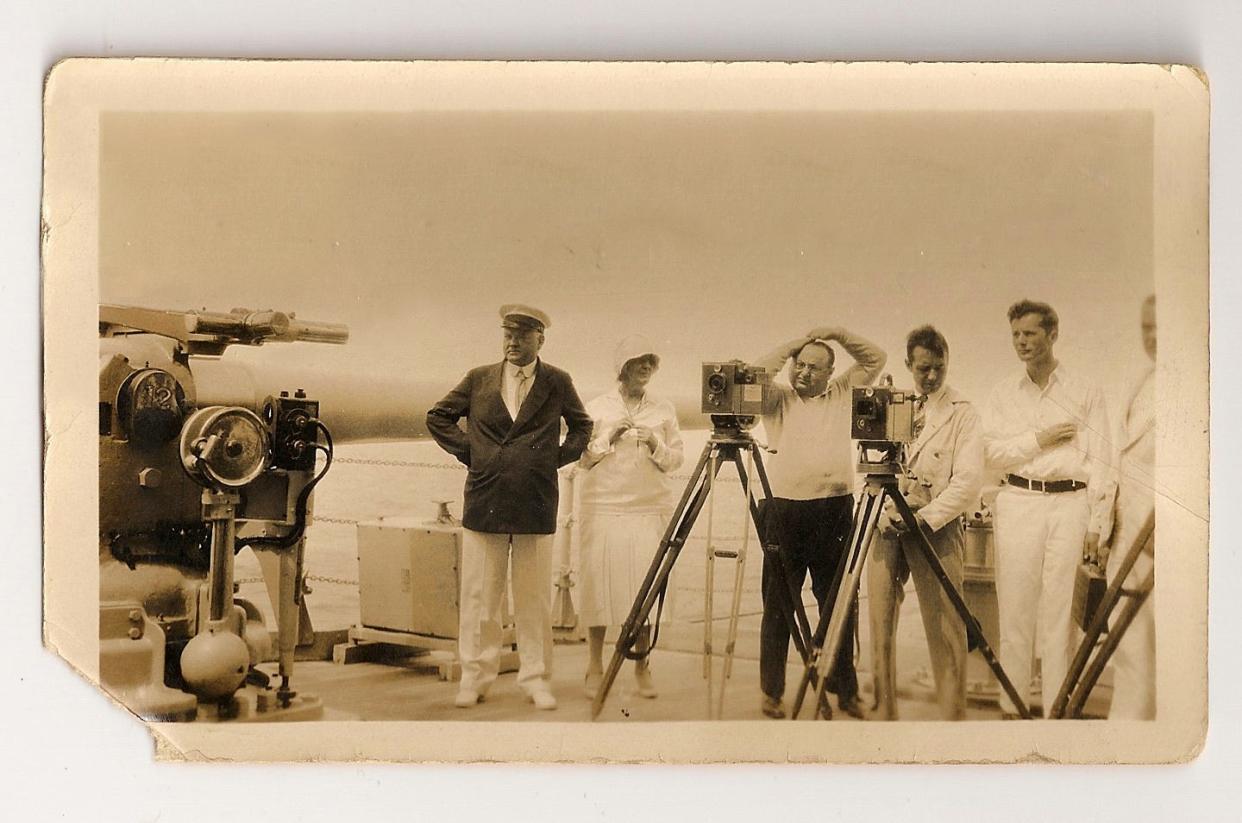Failed assassination attempts, like the plot against Herbert Hoover, dot US history
The attempted assassination of former President Donald Trump on Saturday is the latest example of our nation’s history of political violence aimed at those who have occupied the executive mansion. While the assassinations of presidents Abraham Lincoln and Robert F. Kennedy are firmly entrenched in our collective conscience, most failed attempts are lost to history. Among them: the Argentinean plot to assassinate Herbert Hoover, the West Branch native and 31st president of the United States, who was the target of an attempted assassination nearly a century ago.
Latest: Secret Service denies blaming local police for Trump rally shooting
Shortly after his election on Nov. 6, 1928, Hoover — who was accompanied by his wife and Waterloo native Lou Hoover — embarked on a goodwill tour of Latin America, where he faced his first legitimate threat of assassination. The president-elect traveled on the USS Utah to Ecuador, Peru, Brazil, Chile and Uruguay, with the goal of reaching Argentina in December to deliver his message of peace and harmony. Along the way, Hoover coined the phrase “good neighbors.” But it was Argentinean anarchist Severino Di Giovanni, who according to Mel Ayton’s book “Plotting to Kill the President: Assassination Attempts from Washington to Hoover,” “saw Hoover’s trip as an opportunity to exact revenge on the United States” after two American anarchists were tried and executed in 1927 for murder and armed robbery in Massachusetts.
Di Giovanni, who immigrated from Italy to Argentina during the early 1920s, was no stranger to running afoul of the law. He was active with groups of anarchists and anti-fascists, according to Ayton, and he bombed the U.S. Embassy in Buenos Aires. Following his arrest, he was tortured for five days but released due to a lack of evidence.
On July 22, 1927, Di Giovanni and two fellow Italian anarchists blew up a statue of George Washington in Palermo, Buenos Aires. Several hours later they exploded a bomb at the Ford Motor Co. On Aug. 15, they also attempted to assassinate the federal police officer in charge of the investigation of their crimes by bombing his house.
More: Historic front page from the Des Moines Register, Nov. 7, 1928: Hoover elected president
When Di Giovanni learned about Hoover’s trip to Argentina in 1928, he recruited fellow leftist sympathizer Alejandro Scarfó to murder the president.
Hoover boarded a train in Santiago, Chile, that crossed the Andes Mountains to Buenos Aires, and Scarfó was to install explosives on the rails as it approached the Argentine capital. Fortunately, police rounded up several anarchists beforehand and found a railroad map with Hoover’s route marked in red pencil, as well as an arsenal of bombs, guns and counterfeit money. The evidence incriminated Scarfó, who admitted to authorities his plan to assassinate Hoover, as hundreds of guards were deployed to the train station to protect the president. Scarfó would be tried and sentenced to jail before being released in 1935.

In January 1931, Di Giovanni was arrested, tried and sentenced to death for his crimes. The 29-year-old anarchist was executed by a firing squad on Feb. 1, 1931.
After Hoover returned to the U.S. for his inauguration, the Secret Service learned of another attempt on his life, on Jan. 14, 1929, in Miami, shortly before a fishing trip. Later that year, according to Ayton, the Secret Service learned of another “train crash assassination attempt” while Hoover was touring western states. The president’s train had to immediately stop as the train driver spotted two men removing a car from the tracks. Secret Service agents investigated the incident, which resulted in the arrest of two other men who confessed that they placed the car on the tracks to collect insurance money without the intent to kill the president.
During Hoover’s presidency there were also incidents of fence jumpers and intruders at the White House, as well as letters from people who wanted to shoot Hoover, and other false alarms.
Hoover’s dwindling popularity during the Great Depression heightened the awareness of the Secret Service to protect him, which led to tighter security of future presidents.
More: Opinion: It is time to reignite Iowa’s pride in Herbert Hoover
During his 1932 reelection campaign, Hoover spoke to a crowd in Des Moines in spite of evidence of plots to assassinate him there as the Iowa National Guard lined the streets. There were also reports of angry farmers gathering in Sioux City to prepare for a hostile demonstration against the president.
“The effect of the Depression on the Detail was acute. Our vigilance had to be doubled; the worries and problems which ordinarily beset us were multiplied,” said Secret Service Agent Edmund Starling in “Plotting to Kill the President.” “Crank letters, threats, and eccentric visitors reached a new high.”

Michael Swanger is the owner and publisher of Iowa History Journal. He is a former Iowa newspaperman and resident of West Des Moines.
This article originally appeared on Des Moines Register: Failed assassination attempts: Examining a plot against Herbert Hoover
